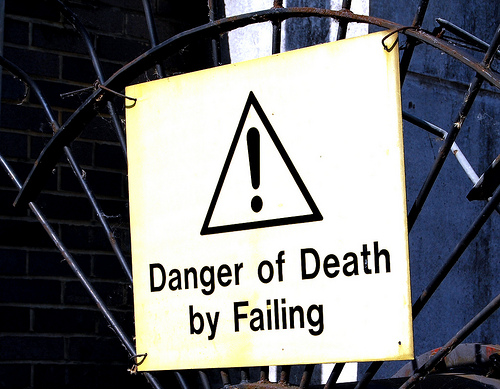Sometimes the sheer clarity of hindsight is like life’s annoying way of saying, “I told you so!” Looking in the rearview mirror to see what went wrong is integral to learning from our mistakes, but we often wish for hindsight’s clear vision when we’re forging our way forward.
Research psychologist Gary Klein has a startling prescription for that feeling: imagine your plan’s death.

According to Klein, one way to tap into the power of hindsight is a practice called the premortem. In the more familiar postmortem, you analyze an unsuccessful event after it has occurred to figure out what went wrong.
In the premortem, the analysis faces the event head-on while presuming it has failed to generate plausible reasons for the failure. Performing premortems can help identify problems in advance and tune you into early warning signs because you know what to watch out for.
These are the basic steps for conducting a premortem:
1. Prepare: Everyone should be familiar with the plan before starting the premortem.
2. Picture: Imagine the plan has failed miserably and how that feels.
3. Generate: Each person makes a list of plausible reasons for the failure.
4. Share: Take turns sharing one reason at a time, collecting them into a master list.
5. Revamp: Revisit the plan armed with the reasons and revise.
6. Review: Return to the list every so often to check in with any relevant concerns.
Premortems employ prospective hindsight. The paradoxical term involves the mind trick of imagining that an event has already happened. Prospective hindsight “increases the ability to correctly identify reasons for future outcomes by 30%,” says Klein, citing one of the better-titled studies, “Back to the Future: Temporal Perspective in the Explanation of Events”.
The researchers found that people generate reasons more efficiently, and often in more detail when they conceive of an outcome or event as certain. So while many techniques such as risk analysis share the desired effect of making better plans and decisions, the premortem is not about imagining what might or could go wrong, looking for potential holes. Its effectiveness relies on imagining that things did go wrong before coming up with plausible reasons.
The mind works differently when we ask “what now?” instead of “what if?”

The power of the premortem lies in its great leveling effect. Starting a conversation from a point where the project has already failed is liberating. It extracts some of the politics and politeness that can muddle the planning stages. Klein recounts how one executive at a Fortune 50-size company reasoned that a billion-dollar project had failed because of waning interest in the wake of the CEO’s retirement. Sharing that type of thought in other circumstances may be a no-no.
The failed-starting point also helps neutralize cognitive biases resulting from the overinvestment and overconfidence of people who have strong feelings of ownership and authorship of a plan. Instead of flying over objections or identification of problems as a matter of course (the drive-by “Problems? Questions?”), the exercise increases participation and buy-in from objectors who get a real opportunity to share their opinion.
Mentally traveling back to the future is a great way to open up your field of vision to new possibilities and insights and pave the way to better decision-making. Prospective hindsight isn’t 20/20, and projects are sometimes just bound to fail. But at least we can tune up our planning processes and give voice to our team members who would’ve said, “I told you so!” in their head.
Liked this post? Subscribe to our free newsletter for more great content on productivity, management, and how to work better!
Images: [1] AlmazUK/Flickr; [2] Frederic Poirot/Flickr
